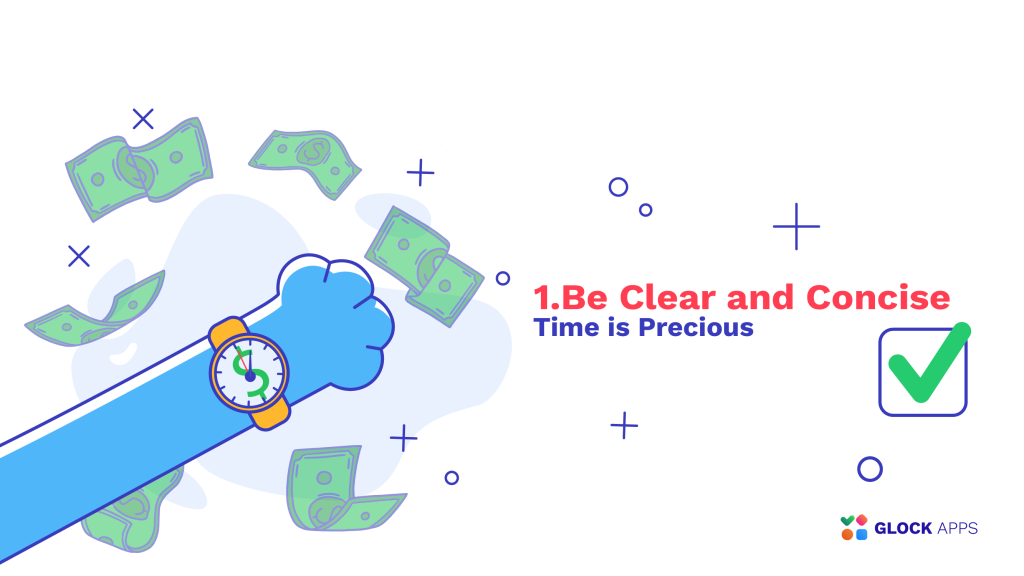5 Cold Email Trends to Nail Your Outreach Campaigns in 2024

Email marketers are always looking for ways to increase open rates, especially because cold email statistics show that response rates to cold emails rarely go above 10%.
There are almost endless questions about cold emailing. What is the best Subject line? How many follow-ups is the right amount? How can one make sure a message finds its way into a prospect’s inbox and gets a response?
It feels like an unsolvable puzzle we are struggling with in order to create cold emails that will grab the readers’ attention, generate leads, and result in profitable transactions.
Thus, let’s explore the newest cold email trends that may completely transform your cold email outreach strategy and give your efforts a boost.
Cold Email Trend #1: Be Clear and Concise – Time is Precious.

The rule of thumb for cold emailing in 2024 is very clear: be direct and concise. Not only should you make accommodations for recipients with shorter attention spans, but you should also respect their valuable time and your own.
In a world where time is becoming a more valuable resource, clients are handling multiple activities at once. A brief, direct email lets them know you value their time just as much as they do.
Think of it as the email version of a solid, cordial handshake – effective without needless pause.
How to Write a Good Cold Outreach Email
- Start your email with the most important details. Why are you reaching out to them? What is the advantage for them? In the first few lines, answer these questions. Additionally, this is what the subject line of your emails should do.
- Speak in simple terms and in brief sentences. Avoid using industrial jargon unless your recipient’s field is well-versed in it.
- Don’t send your recipient too many links or requests at once. Maintain a single, distinct call to action. After reading your email, what is the first thing you want them to do?
It is to note that being short and clear does not mean being cheeky; instead, it refers to making the introduction to action flow easily and quickly. The most successful cold emails in 2024 will be direct, conveying a message that is short and to the point, respecting the recipient’s time and intelligence and possibly even evoking some serious thought.
Cold Email Trend #2: Reach out via Multiple Channels – Variety Is Essential.

Gone are the days when it was possible to make a good profit by reaching out to the prospects via a single email channel. Since your audience is dispersed across numerous channels, so your cold outreach emails should be.
Your customers navigate seamlessly between different platforms and to truly captivate their interest, your cold emailing approaches must be equally adaptable.
There’s a crucial element you cannot overlook – consistency. Your cold email communication, irrespective of the platform, should consistently reflect the fundamental values and offerings of your brand.
Develop a content calendar that synchronizes your emails, social media posts, and advertisements around a central theme or campaign. This ensures that whenever your customers come across your brand, they encounter a uniform and cohesive experience.
How to Develop a Multichannel Workflow for Cold Emails
When you see yourself starting a cold email campaign, take into consideration the following well-thought-out workflow:
- Send a customized email to begin the conversation. Remain short and direct; sometimes a salutation and a brief explanation of your offerings will do.
- No answer? It’s time to interact on social media. Send them a quick note via direct message on social media, particularly on sites like LinkedIn. A quick, cordial approach in this area can be fruitful.
- Make thoughtful use of retargeted advertising if they don’t respond. These advertisements function as a subtly reminding touchstone to rekindle their interest in your outstanding offerings.
- Use email again to inquire further. This time, elaborate on your offering in detail. You might even include a case study to further highlight the benefits you offer.
Cold Email Trend #3: Make Use of AI – Personalization is the Key.

You’re on the right track if you plan to use artificial intelligence to improve personalization and streamline communication without taking the place of actual human engagement.
AI tools are getting better at gathering detailed information about possible leads. They can collect and evaluate data to create cold outreach emails that appeal to people personally. Though AI plays a big part in personalizing everything, the end result is a more genuine encounter that seems less like a generic broadcast.
It’s important to note that AI should be seen as a tool to complement human interaction rather than to replace it. The appeal of a personalized email should never be understated.
How to Make Use of AI for Creating Cold Outreach Campaigns
You can think about using AI to do the tasks that were either neglected or did not receive enough attention in the past:
- AI can be used to extract information about your leads’ hobbies, market trends, and interaction styles. This guarantees that recipients will respond favorably to your emails.
- Regardless of the language you use in your emails, you can let AI take care of the nuances of grammar and style.
- You can use AI to examine the tone of your cold email. It can offer suggestions to make it more engaging, personal, and natural.
Remember that AI appears more like a competent assistant when it comes to cold emailing – it’s not there to replace you.
Cold Email Trend #4: Send from a New Domain – Brand Security is Priority.

Why would one bother with setting up a new domain for cold outreach email campaigns? It’s simple – to secure the reputation of the main domain. As it was mentioned, the response rate to cold emails rarely goes above 10%. Additionally, cold outreach campaigns usually generate a higher spam complaint rate than subscription messages.
By using a different domain for your cold email outreach you protect the reputation of your main domain, avoiding any damage caused by reported spam and guaranteeing that recipients get important transactional communications sent from the main domain in their inboxes.
Moreover, using a separate domain specifically for cold email outreach allows you to track these campaigns separately, which makes it easier to measure how effective they are.
How to Set up a New Domain for Cold Email Outreach
If you don’t know how to start, here is a good plan to follow:
- Think of a new domain name – it should resonate with your main domain for better recognition. You can add a prefix like mail.maindomain.com or just use a different extension, for example, maindomain.com -> maindomain.io.
- Create a new mailbox on the new domain. Ensure this mailbox will be monitored for replies.
- Set up DNS records – SPF, DKIM, DMARC – for the new domain. Make sure to include all of the senders that you will use to send cold emails in the SPF record. By publishing a DMARC record, you’ll be able to collect DMARC reports for the cold outreach domain separately and you’ll quickly see if any authentication gaps happen.
- Warm up a new domain. It will allow you to establish a reputation for the new domain and send more cold emails to the prospects’ inboxes.
Cold Email Trend #5: Test Cold Email Deliverability – Consistency is Must Have.

The goal of any outreach campaign is to get as many user interactions as possible. Whatever call to action you include, you want to engage your prospects in a conversation. But if your emails go to Spam, you cannot expect a good response rate.
With dozens of email messages an average email user is receiving every day, it’s unlikely for them to scrutinize their Spam folder looking for your cold email there. Therefore, it’s important to maximize your Inbox deliverability in order to grab the recipient’s attention outright.
Additionally, because of a low response rate and higher complaint rate, the reputation of a cold outreach domain may go down with time. This will impact the Inbox placement rate inevitably. It’s important that you be consistent with deliverability testing in order to not miss the point of no return.
How to Test Deliverability of Cold Outreach Emails
There are email testing tools like GlockApps where you can quickly run an email test and estimate your possible Inbox placement rate. Here are the steps to follow:
- In your account, run an Inbox Insight test. You’ll want to send your real cold email template to the provided seed list. Be sure to send it from the actual mailbox that you set up for cold outreach campaigns.
- Analyze the report for issues possibly affecting email placement: email authentication, sender score, email spam score, content analysis. Read the action steps to find out how to improve the Inbox rate if it’s not acceptable.
- Make the changes to the content, Subject line, or sending infrastructure if the related issues are detected.
- Test until you receive a satisfactory Inbox placement rate.
- Set up an automatic test for a good cold email copy to test it on auto-pilot every 3, 5 or 7 days.
The average response rate for cold emails currently stands at 8–9% at most. This number might drop even more if you don’t re-consider your cold emailing approach. In order to keep up with the changing landscape, it is therefore advised that you adopt the new cold emailing trends that have been highlighted in this article.



